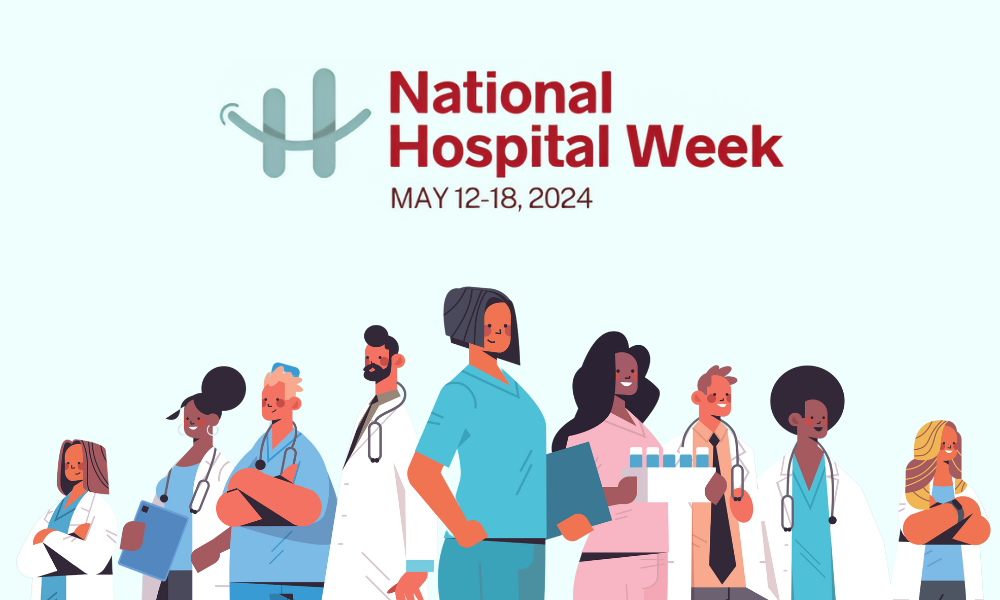COVID-19 Created an ‘Existential Crisis’ for Some Physicians, And It’s Changing How They Work
(Edited from Neurology Today article by Orly Avitzur, 12/2/2021)
For many neurologists [and other physicians], the pandemic exacerbated pre-existing pressures. Staff shortages, pent-up demand for services, and long hours have led some to shift focus and career settings.
Widespread healthcare staffing volatility in the wake of the COVID-19 has created many new stressors and demands for physicians, including neurologists, over the past year. The pandemic’s continuing disruption has caused many to re-evaluate their current positions, reprioritize their values and long-term goals, and rethink how and where they work.
Increasing Physician Burnout
Perhaps not surprisingly in the wake of a pandemic, 61% of more than 2,500 respondents to a recent physician survey said they “often” experience feelings of burnout — a 30-percent increase from 2018 responses to the same question, according to data from The Physicians Foundation.
The Physicians Foundation commissioned physician staffing firm Merritt Hawkins to poll physicians between May 26 and June 9, 2021, producing a report entitled, 2021 Survey of America’s Physicians, A Year Later: A Survey Examining How the Coronavirus Pandemic Affected the Nation’s Physicians.
The burnout-related findings echo results from LocumTenens.com’s 2021 Physician and Advanced Provider Salary Report (covered by Locumpedia over the summer) indicating that 39% of clinicians reported increased levels of stress and burnout due to the pandemic.
Other key 2021 findings from The Physicians Foundation survey included:
- 49% of responding physicians reported a reduction in income.
- 32% experienced a reduction in staff
- 23% said they would like to retire within the next year (more changes to come).
- 18 percent had switched their practices to telemedicine, primarily.
- 9 percent had changed jobs, including 3 percent to non-clinical work.
- 2 percent had retired.
- 2 percent had closed their practices.
The survey, along with many other healthcare-staffing-related reports over the past year or so, suggests the pandemic’s aftermath will greatly affect physician retention.
In the wake of COVID-19, both academic and private-practice neurologists have begun looking for positions offering more flexible or lifestyle-accommodating schedules. Some seek non-clinical jobs, while others are turning to the gig economy — which, for clinicians, means locum tenens; per diem or telemedicine practice — and earnings paid at a higher rate, but often involving travel and unsubsidized insurance, retirement and other benefits.
In interviews with Neurology Today, several neurologists shared their stories about the stress they faced and the changes they made in the era of COVID-19. Here we share one involving a switch to locum tenens practice. For stories of several other neurologists’ experiences, read the complete feature from Neurology Today here.
From Staff to ‘Special Forces’
After child neurologist David E. Mandelbaum, MD, Ph.D., FAAN, had retired from full-time academic practice at Brown in 2019, he turned to locum tenens opportunities, working in three locations during that pre-pandemic year — including a rewarding stretch at St. Jude Children’s Hospital, which had only one child neurologist at the time.
While the advent of COVID-19 disrupted temporary employment activity initially, he’s been inundated with offers since summer 2021. “I’m suddenly swamped with requests,” said Dr. Mandelbaum, who was very eager to get back to work. One position to which he was regularly reassigned had lost three of four child neurologists, a not-atypical example of employment fluxes described by recruiters over the past several months.
![]()
Dr. David Mandelbaum (with his so-called “granddogter”) said he’s been swamped with locum tenens requests as hospitals and healthcare systems try to address physician, and other clinical staffing, shortages.
Indeed, when Neurology Today first covered the topic of locum tenens in 2010, it was a challenge to find more than a handful of locum neurologists. That has changed noticeably, as the pandemic has contributed to a greater demand for these positions and the flexibility they provide.
“There’s been a marked increase in requests for locum services compared to pre-pandemic demands,” Staff Care Divisional Vice President Jana Reed said. The locum tenens arm of AMN Healthcare, Staff Care, Inc., is the largest healthcare staffing firm in the US.
Demand Benefits Locum Docs
Reed noted that in the past, clients sought her company’s services for temporary placements like ‘fill-ins’ for vacationing physicians or those on maternity leave, or supplemental on-call placements for nights or weekends. Now there is a critical lack of staffing, with vacancies in nearly every practice setting.
“It is a ‘[seller’s¹] market,’ ” Reed said. “Locum physicians can dictate the types of settings they’d like to work in and the location they’re looking for, as well as the duration of time, and whether they prefer to do telehealth or face-to-face visits. Physicians can choose exactly what they want; they are in the driver’s seat due to a widespread shortage of physicians.”
In a 2021 Staff Care survey, 82 percent of providers cited freedom/flexibility as the primary benefit of working locum tenens, followed by pay rate (55 percent). “Indeed, pay has risen to meet the demand,” Reed said.
“Compared to the pre-pandemic year of 2019, pay rates for locum physicians have increased about 17 percent, with ranges that increase with specific skills, years of experience and credentials, as well as willingness to work at night,” Reed said. “Especially desirable in neurology are clinicians who are proficient in teleneurology and telestroke.”
Dr. Mandelbaum views the trend to locum work as a response, in part, to the changes neurologists have experienced in the workplace.
“My sense is that you are [always] one administrative change away from dissatisfaction. What I have seen is that after a new leader or administrator comes in and policy changes are made, what may follow is physician dissatisfaction due to broken promises and violated expectations,” Dr. Mandelbaum said.
He noted that employers turn to locum tenens companies to temporarily fill abrupt departures while recruiting for permanent positions.
As chair of the Child Neurology Section at the American Academy of Neurologists (AAN), Dr. Mandelbaum is concerned about a ‘revolving door’ scenario in his field: “We only train about 105 child neurologists each year, and because we are a relatively new specialty that was founded in the 1960s, we number only 1000 in total. “We are not growing the pipeline, which leaves us quite vulnerable to workforce losses.”
¹The Neurology Today article quoted Reed as saying “buyer’s market,” but we believe she either misspoke or was misquoted, considering the point she was making.
Locum Tenens Pioneer and Interim Physicians Founder, Dr. Ken Teufel, Has Passed Away
Just a month shy of his 78th birthday, Dr. Kenneth Teufel died peacefully at his Texas home on Friday, Nov. 12, 2021. Serving others was his lifelong goal.
One of the founders of the locum tenens staffing industry, “Dr. Ken” created a staffing service called Physicians Relief Network (PRN) based on the concept of ‘physicians relieving other solo practitioners’ in rural areas of the country with seeming “24/7” demand.
Dr. Teufel graduated in 1970 from the University of Texas Medical Branch at Galveston, where he received the Gold-Headed Cane award. Many medical schools and specialty societies bestow the award to recognize physicians who ‘symbolize pursuit of the highest standards of scientific excellence and integrity.’
After interning at Brackenridge Hospital in Austin, Dr. Teuful completed his family practice residency at John Peter Smith Hospital in Fort Worth. He practiced obstetrics and pediatrics in the small town of New Braunfels, Texas, until 1978, when he sold his practice to begin covering for colleagues, eventually recruiting other physicians to do the same.
That group became PRN, which–along with one of the country’s largest permanent placement firms in Harris, Kovacs, Alderman (HKA)–would evolve into present-day Interim Physicians. Through years of different owners and name changes, Dr. Ken was a constant as the company’s medical director.
“First and foremost, Dr. Teufel was a true gentleman. Choosing medicine was a wise career path for Ken, because his bedside manner was second to none,” Interim Physicians CEO Tim Hand said. “Little did he know he was helping to create what has since become a multibillion-dollar industry, employing thousands of people and providing healthcare where none might exist otherwise.”
An adjunct faculty member at Texas State University, he designed and taught the school’s first course in health communication, serving as “member emeritus” of the school’s communication studies advisory council. He also authored a monthly blog for Interim called “Dr. Ken’s Corner” for more than a decade; his last post was published October 25.
Floyd Lee Locums Named “Small Business of the Year” by Charleston Metro Chamber of Commerce
(Edited from Floyd Lee Locums news release, 12/6/2021)
At its “2021 Honors Awards” on December 3, the Charleston Metro Chamber of Commerce named Charleston, SC-based, national healthcare staffing firm Floyd Lee Locums its 2021 Small Business of the Year. Sponsored by BlueCross BlueShield of South Carolina, the “Member-Bration” event celebrated winners in seven award categories.
Among more than 1,600 member companies, Floyd Lee Locums won resoundingly for being ‘an outstanding small business demonstrating value in community engagement, entrepreneurship, employee relations, leadership and performance—and for generating success by implementing creative and innovative solutions,’ according to the Charleston Chamber.
“Our healthcare staffing philosophy offers a concierge job-placement experience for healthcare providers who provide high-quality treatment,” Floyd Lee Locums CEO Natasha Lee said. “This award confirms we’re doing the work to fulfill that mission.”
In addition to the December 3 honors, the Charleston Metro Chamber named Floyd Lee Locums CEO Natasha Lee to its executive committee. The locum tenens agency also was named 925th on the 2021 Inc. 5000 list of the fastest-growing private companies in America.
The Healthcare Staffing Story
Cross Country Healthcare: Fewer Nurses Satisfied with Jobs in COVID-19’s Wake
(Edited from SIA Daily News, 12/1/2021)
Fewer nurses are satisfied with their occupations in the wake of COVID-19, according to a study by healthcare staffing firm Cross Country Healthcare Inc. (NASDAQ: CCRN) and Florida Atlantic University’s Christine E. Lynn College of Nursing.
The study, based on 570 responses between May and June 2021, found 32% of nurses are “very” or “completely” satisfied with their jobs, compared to 52% prior to the pandemic.
In addition, 29% of nurses surveyed said their desire to leave the profession is dramatically higher now than before the pandemic.
“Having recently worked in the hospital setting, I can tell you how difficult this time has been for nurses and other healthcare staff,” said Cross Country Chief Medical Officer Michael Skovira.
Most (97%) survey respondents agreed that increasing pay rates and other incentives would attract and retain more nurses. In addition, 85% believed cross-training must be improved to respond to crisis events. Moreover, 85% said multi-state nurse licensing would have benefited the country greatly during the pandemic.
9 States Using National Guard Troops to Ease Healthcare Staffing Strain
(Edited from Becker’s Hospital Review stories from 12/10/2021, 11/24/2021, 10/5/2021, 8/24/2021 8/17/2021)
As hospitals face capacity constraints amid a COVID-19 surge, several states have enlisted the National Guard to help staff healthcare facilities, The New York Times reported Dec. 9.
Indiana
Indianapolis-based Indiana University Health, the state’s largest hospital system, announced Dec. 9 it requested assistance from the National Guard for most of its hospitals. New daily COVID-19 hospitalizations in Indiana have climbed 47% over the last two weeks, according to data tracked by The New York Times.
Six-person National Guard teams with clinical and nonclinical members will deploy to IU Health hospitals in two-week increments.
Maine
On Dec. 8, Maine Gov. Janet Mills activated up to 75 additional members of the state National Guard. She said they would be used in nonclinical support roles to expand capacity at healthcare facilities.
Joel Botler, MD, CMO of Portland-based Maine Medical Center, said the state’s largest hospital “has had no critical care beds available” at times this week. About half of surgeries at Maine Medical Center were being rescheduled.
New Hampshire
Seventy National Guard members will be deployed in New Hampshire within the next few weeks to provide non-clinical support at hospitals, The New York Times reported Dec. 9.
The newspaper reported that Gov. Chris Sununu also said the Federal Emergency Management Agency (FEMA) was sending a 24-person team to help healthcare facilities.
New York
New York Gov. Kathy Hochul announced this month that 120 National Guard troops would be deployed to overburdened nursing homes.
New York officials also announced Dec. 6 that the state would require 32 hospitals with limited capacity to halt nonurgent procedures as COVID-19 cases increase in the state. The state-defined “limited capacity” as below-10% staffed bed capacity, or as determined by the health department based on regional and healthcare utilization factors.
New daily COVID-19 hospitalizations in the state have climbed 33% over the last two weeks, according to data tracked by The New York Times.
Oregon and Tennessee
Back in mid-August, Becker’s reported that Oregon and Tennessee were deploying National Guard members to support front-line hospital workers battling a COVID-19 surge.
The Tennessee Department of Health (TDH) announced the deployment Aug. 16, the same day it reported approximately 2,200 COVID-19 hospitalizations (down from a peak of 3,300 in January 2021).
TDH Commissioner Lisa Piercey, MD, attributed the strain on hospitals not only to COVID-19 but also to other respiratory illnesses affecting children. Hospitals in the state may request medical personnel resources and must meet specific criteria to qualify for assistance, according to TDH.
In Oregon, Gov. Kate Brown said 500 National Guard members will be deployed to Oregon hospitals beginning Aug. 20. The Oregon Health Authority reported 752 COVID-19 hospitalizations across Oregon, including 206 in intensive care, on Aug. 16.
Governor Brown said the state plans to deploy up to 1,500 members.
Kentucky
On Aug. 24, Becker’s reported that Kentucky Gov. Andy Beshear would send 75 National Guard members to struggling hospitals after the state set new pandemic records for hospitalized COVID-19 patients in intensive care and on ventilators the day before.
At an Aug. 23 press conference, the governor reported a record 1,893 Kentuckians hospitalized for COVID-19 as of Aug. 23, and “119 out of 120 Kentucky counties in the red zone.’ The state also reported records for Kentuckians in ICUs (529) and on ventilators (301).
Governor Beshear said that, beginning in September, 75 National Guard members would deploy in teams of 15 to help with ‘some 21 out of 25 hospitals experiencing staffing shortages.’ He also said he had requested, from FEMA, eight teams that included registered nurses and nursing assistants to assist hospitals, along with emergency medical services ‘strike teams’ to help with patient transfers.
California
On Oct. 5, Becker’s reported that the California National Guard dispatched teams to three hospitals in northern California and the Central Valley as workers continued to fight a surge of COVID-19 cases, according to an Oct.1 Los Angeles Times report.
Teams of 16 National Guard members were deployed to assist the staff at Memorial Hospital and Mercy Hospital Southwest in Bakersfield, Calif., and Mercy Medical Center in Redding, Calif. Adventist Health in Bakersfield, Calif., received a 14-person team on Oct. 2.
“We still need more nursing and clinical support,” said Daniel Wollcott, president of Adventist Health Kern County.
Minnesota
On Nov. 24, Becker’s reported that, according to a Nov. 22 news release, Minnesota Gov. Tim Walz activated the National Guard to form skilled-nursing “response teams” to support long-term care facilities experiencing staff shortages, while proposing to provide $50 million in federal funding to help facilities with hiring and retention.
Initially, 400 National Guard members were to start training as certified nursing assistants and temporary nursing aides by Nov. 29.
Facilities facing severe staff shortages could request assistance from the Minnesota Department of Public Health. Also, selected facilities were to receive a National Guard team to provide support for up to three weeks at a time.
Temporary Healthcare Staffing Market Technology, New Innovations, Forecast Report to 2027
(Edited from AltCoinBeacon, 11/30/2021)
Market Study Report has recently added a temporary healthcare staffing market report offering a comprehensive synopsis of revolving market valuation, market size, SWOT analysis, revenue estimation and geographical spectrum of the market. The report explains primary business obstacles and growth prospects across the forecasted timeline while examining the current competitive scenario.
It also emphasizes overall remuneration during the analysis period, along with industry-segment details about the market’s geographical landscape and competitive terrain.
Click here to request a sample report.
Global Industry Analysts: World Healthcare Staffing Market to Reach $47.8 Billion by 2026
(Edited from PRNewswire, 12/8/2021)
A new market study published by Global Industry Analysts (GIA) Inc. presents fresh perspectives on a significantly transformed, post-COVID-19 marketplace.
Entitled Healthcare Staffing – Global Market Trajectory & Analytics, the report highlights opportunities and challenges healthcare staffing firms can expect to face over the next five years.
World Healthcare Staffing Market
FACTS AT A GLANCE
Edition: 5; Released: November 2021
Companies: 162
“Players” covered include Adecco Group; Almost Family; AMN Healthcare; Aureus Medical Group; CHG Management, Inc.; Cross Country Healthcare, Inc.; Envisions Healthcare Corporation; Healthcare Staffing Services; inVentiv Health; LocumTenens.com; Maxim Healthcare Services, Inc.; Supplemental Health Care; Syneos Health, Inc.; TeamHealth; Vista Staffing Solutions and others.
Coverage: All major geographies and key segments
Segments: Service Type (Travel Nurse Staffing, Locum Tenens Staffing, Allied Healthcare Staffing, Per Diem Nurse Staffing)
Geographies:
World; United States; Canada; Japan; China; Europe (France; Germany; Italy; United Kingdom; Spain; Russia; and rest of Europe); Asia-Pacific (Australia; India; South Korea; and rest of Asia-Pacific); Latin America (Argentina; Brazil; Mexico; and rest of Latin America); Middle East (Iran; Israel; Saudi Arabia; United Arab Emirates; and rest of Middle East); and Africa.
Complimentary Project Preview:
This is an ongoing global program. We are offering complimentary access to qualified executives driving strategy, business development, sales & marketing, and product management roles at featured companies. Previews provide deep insider access to business trends, competitive brands, domain expert profiles and market data templates, and much more.
You may also build your own bespoke report using our MarketGlass™ Platform, which offers thousands of data bytes without an obligation to purchase our report.
Tools to Try/News to Use
Physician Wellness & Financial Literacy Hybrid Conference 2022
Presented by The White Coat Investor
“Invest in yourself today to create a renewed passion for tomorrow.”
February 9-12, 2022
JW Marriott Desert Ridge I Phoenix, AZ
Virtual Options Available
How ‘Bout This?
Top Health and Well-Being Trends for 2022
(Edited from Managed Healthcare Executive, 11/15/2021)
Virtual care that integrates with in-person offerings, and the continued expansion of mental health and well-being services, are among six health and well-being trends that construct a “collective urgency” for employers and their workforces for 2022, according to the Business Group on Health’s 2022 Large Employers’ Health Care Strategy and Plan Design Survey.
The six trends are:
- Virtual health is here to stay, but integration with in-person care is key.
- Continued expansion of mental health and emotional well-being solutions.
- Gateway to increased health equity.
- Focus on quality and value.
- Accelerating the future of workforce well-being.
- Health policy becoming increasingly active.










